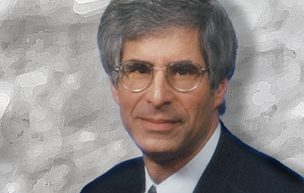Six weeks ago the politically polarized electorate of the U.S. couldn’t agree on the color of an orange. But on Feb. 24 Russia started a war by invading Ukraine, and Americans suddenly came together in a spirit of unity and selflessness not seen since 9/11.
Statistics cited in a March 18 CNN summary of various national polls dramatically illustrate not only the strength of U.S. support for Ukraine but its overwhelmingly bipartisan nature.
In a Monmouth University poll, CNN reported, “81% of Americans support the economic sanctions imposed on Russia, even as 33% say in a separate question that these sanctions are doing a lot to hurt the US economy. In a Pew Research survey, 85% of Americans favor keeping strict economic sanctions on Russia. That support crosses party lines. In Monmouth’s poll, 75% of Republicans and 91% of Democrats support the sanctions. Pew finds even less of a partisan gap, with 85% of Republican and Republican-leaners in favor, compared with 88% of Democrats and Democratic-leaners.”
The Ukraine conflict has exerted a similar centripetal force on the European member nations of NATO. That’s hardly surprising given that Russia is in Europe’s back yard.
But Washington, D.C., is nearly 5,000 miles from Kyiv, and both the war and sanctions being imposed on Russia are causing Americans consumers pain at the gas pump and supermarket checkout line while depressing stock prices and the value of retirement accounts. On top of that, a new poll from the Associated Press NORC Center for Public Affairs Research has found that roughly half of Americans are very concerned that Russian President Vladimir Putin would directly target the U.S. with nuclear weapons on account of Ukraine.
So what’s the “X” (or perhaps I should say “Z”) factor that has rallied the American public to support severe sanctions against Russia and extensive military aid to the Ukrainian resistance?
Doubtless the unprovoked nature of the aggression, the stolid courage of Ukraine’s defenders, and our instinctive sympathy for the underdog play a role. But the constant media coverage of death and devastation inflicted upon innocent civilian lives and homes has likely had the biggest impact.
Stories of local connections to the conflict can’t help but heighten empathy for the plight of the people of this war-torn country. Consider, for example, that of first-year Bates College student, Ruslan Peredelskyi, who fled Donetsk for Kyiv with his parents during Russia’s more limited incursion into eastern Ukraine in 2014, only to see his father trapped in the latest invasion. His words, “My entire nation is in torture,” are powerfully evocative of the tragedy.
To be sure, a majority of Americans still oppose direct U.S. military involvement in the war, but they’re quite happy to see our government arm the Ukrainians to the teeth with all manner of hi-tech weapons.
The scenario is similar to what happened during the four-year period leading up to the Japanese sneak attack on Pearl Harbor in December 1941, the event which finally catapulted U.S. entry into World War II against the Axis powers. During that period, newsreels and radio broadcasts brought home the horror of war and brutality of the aggressors with graphic images and descriptions of the 1937 “rape” of Nanking (in which the Imperial Japanese army massacred about 300,000 civilians), the 1939 Nazi invasion of Poland, and the devastation of London and other English cities by the massive Luftwaffe bombing campaign of 1940-41 known as the Blitz.
This coverage created an increasing sense of outrage against the Axis which gradually overcame strong isolationist sentiment in the U.S. and allowed President Franklin Roosevelt to justify the United States, as the “Arsenal of Democracy,” shipping arms to Britain and later the Soviet Union despite our neutral status.
The dramatic change in public opinion following Russia’s Ukraine invasion has paralleled and even exceeded the shift which occurred in the late 1930s and early 1940s in both its speed and intensity. Before Feb. 24, if Americans looked at Ukraine at all, it was mostly through the lens of a Russian disinformation campaign, which falsely portrayed it as a corrupt bastion of neo-Nazism.
Reflecting public opinion, the GOP has suddenly rediscovered its traditional interest in world affairs and multi-lateral security arrangements after four years of slavishly following Donald Trump’s America First banner and his denigration of international alliances. The only criticism President Joe Biden is receiving over Ukraine from congressional Republicans is that he’s not acting fast enough to arm the country.
A seismic change in public opinion came just in time to prevent total Axis victory in World War II, and it comes none too soon to prevent the dangers we are facing now.
Increasingly aggressive autocratic, aggressive and heavily militarized regimes like Russia pose a dramatic threat to world order, to democracies and ultimately to the United States. There’s been no open warfare in Europe since World War II ended in 1945 and no heightened state of military readiness there since the Soviet Union’s breakup in 1989.
But long periods of peace don’t last in the face of complacency. In the words of an ancient Roman general, “If you want peace, prepare for war.”
Elliott Epstein is a trial lawyer with Andrucki & King in Lewiston. His Rearview Mirror column, which has appeared in the Sun Journal for 16 years, analyzes current events in an historical context. He is also the author of “Lucifer’s Child,” a book about the notorious 1984 child murder of Angela Palmer. He may be contacted at epsteinel@yahoo.com
Send questions/comments to the editors.



Comments are no longer available on this story